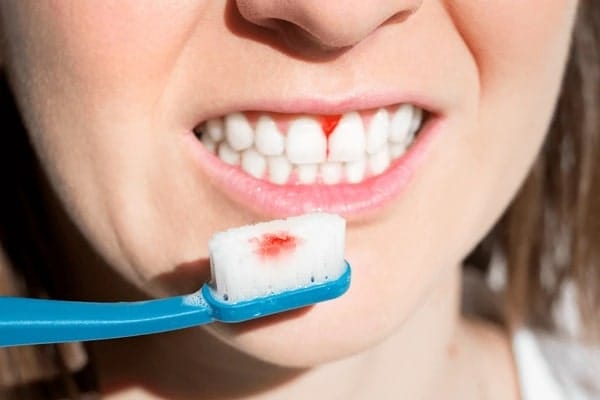Screwless dental implants are a type of implant prosthodontic system where the crown or prosthesis is retained without the use of traditional screws. Instead of a screw-retained connection, these implants utilise a friction-fit mechanism, often referred to as a Morse taper connection, to secure the crown to the implant abutment.
This design enables a screw-free interface between the prosthetic crown and the implant body, which may provide certain mechanical and aesthetic advantages for suitable candidates. A dentist may recommend screwless dental implants for patients seeking a more natural appearance and reduced risk of complications related to screw loosening.
How Do Screwless Implants Stay In Place?
The retention of screwless implants is typically achieved through precision-engineered mechanical engagement. In particular, many systems use a tapered conical connection — where the implant abutment and crown are joined using a tight friction-fit.
This interface depends on:
- Tapered abutments that match the crown’s internal structure
- Friction-lock principles similar to mechanical press fits
- Biocompatible materials, such as titanium, for a secure connection
- Custom-fabricated crowns that fit snugly without requiring cement or screw fixation
The connection is designed to resist the dislodging effects of occlusal forces and chewing while offering adequate stability for daily function.
What Are the Advantages of Screwless Dental Implants?
Screwless dental implants can offer a number of benefits for certain patients and treatment scenarios. However, it is important to emphasise that outcomes may vary, and not all patients are suited to this approach.
Potential advantages include:
- No visible screw hole, which can improve aesthetics in anterior (front) teeth
- Reduced component loosening, as there is no screw to displace
- Potential for simpler crown designs in some clinical situations
- More natural appearance with no need to mask screw access
- Improved occlusion management, with fewer adjustments to account for screw channels
As with any medical procedure, these benefits should be weighed against potential risks and discussed with a registered practitioner.
Are There Any Risks With Screwless Dental Implants?
Yes, there are specific considerations and limitations associated with screwless implants. While they may reduce the risk of screw-related issues, they introduce new variables that must be carefully assessed.
Considerations include:
- Retrievability limitations – removal of the crown may be more difficult if future adjustments or repairs are needed
- Precision required – the fit must be extremely accurate to avoid micromovement
- Limited applications – not typically used for full-arch restorations or where angled abutments are needed
- Potential for wear – long-term friction may affect the interface over time
- Not ideal for all bite types, such as patients who grind or clench (bruxism)
When Might a Screwless Implant Be Recommended?
Screwless dental implants are generally considered for single-tooth restorations, particularly where aesthetics are a key concern. Ideal cases include:
- Anterior restorations, where screw access would compromise the appearance
- Patients with adequate vertical space and low functional bite force
- Situations requiring minimal prosthetic intervention
- Clinically healthy sites with good bone and soft tissue support
However, each case must be evaluated on its own merits, with a full clinical assessment to determine suitability.
What Is the Procedure for a Screwless Dental Implant?
The treatment pathway for a screwless dental implant is similar to that of a conventional implant. However, additional precision is required in the fabrication and placement stages.
Generalised procedure steps include:
| Step | Procedure Stage | Description (Educational & Neutral) |
| 1 | Consultation | Clinical assessment, imaging, and suitability evaluation |
| 2 | Implant Placement | Insertion of titanium implant fixture into jawbone |
| 3 | Healing Period | Several weeks to months for bone to integrate with the implant |
| 4 | Abutment Placement | Friction-fit abutment positioned into the implant body |
| 5 | Crown Seating | Custom crown inserted without screws or cement |
| 6 | Long-Term Review | Periodic check-ups to monitor tissue health and fit |
How Do Screwless and Screw-Retained Implants Compare?
| Feature | Screwless Implant (Friction-fit) | Screw-Retained Implant |
| Retention Method | Mechanical friction (e.g., Morse taper) | Screw fixation through abutment |
| Retrievability | More complex or limited | Easily retrievable via screw access |
| Aesthetic Profile | No visible screw hole | Screw hole may need filling |
| Loosening Risk | Reduced (no screw to loosen) | Screw may require periodic tightening |
| Clinical Indications | Select single-tooth cases | Broad range of uses, including bridges |
| Maintenance | May be more challenging | Typically easier to access |
This comparison illustrates that both systems have their place in dental prosthodontics. Treatment selection depends on individual factors.
What Should Patients Expect After Getting a Screwless Implant?
Patients receiving screwless implants can expect a period of healing, followed by restoration and maintenance.
Typical expectations may include:
- Healing time of several weeks or months
- Instructions on oral hygiene and care
- Periodic reviews to check fit and gum health
- Monitoring of the crown’s stability over time
- Adjustments, if required, by the dental practitioner
Patients should be advised that individual results vary and not all implants will behave identically.
Why Luxe Dental Care for Implant Dentistry?
When it comes to precision dental care, Palm Beach Dental provides a welcoming and professional environment for patients seeking high-quality implant solutions. Our team is focused on delivering personalised, evidence-based treatment plans and supports a philosophy of educating patients rather than promoting procedures.
Our clinicians will take the time to assess your suitability for screwless implants or other prosthodontic solutions, ensuring that all risks, alternatives, and expected outcomes are explained in full. We also emphasise the importance of second opinions and informed consent throughout your dental implants treatment journey.
If you’re considering implant options, contact Palm Beach Dental for a consultation where your oral health and long-term wellbeing are our highest priority.
Important FAQ’s
Q1. What is the difference between a screwless and screw-retained implant?
A screwless implant uses a friction-fit mechanism to retain the crown, while a screw-retained implant uses a screw to secure the crown through the abutment.
Q2. Can screwless dental implants be used for multiple teeth?
These are typically used for single-tooth restorations. Multiple-tooth or full-arch restorations generally require screw-retained systems due to stability and retrievability needs.
Q3. Are screwless implants more comfortable?
Comfort is generally similar to screw-retained implants once healing is complete. However, the absence of a screw access hole may enhance the feel of the restoration in the mouth.
Q4. How long do screwless implants last?
Longevity depends on individual factors such as bone quality, oral hygiene, and bite forces. Regular maintenance and reviews are essential.
Q5. Can the crown be removed later if needed?
Removal is possible but may be more complex than a screw-retained crown. This should be considered during treatment planning.
Q6. Is this treatment suitable for everyone?
No. Patients with certain bite types, such as heavy grinders, or specific anatomical limitations may not be ideal candidates. Clinical assessment is essential.
Research References
- Dental Board of Australia. “Guidelines for advertising a regulated health service.” www.dentalboard.gov.au/Codes-Guidelines/Policies-Codes-Guidelines.aspx
- Better Health Channel (Victoria). “Dental implant surgery – information and care.” www.betterhealth.vic.gov.au
- Australian Dental Association. “Replacing missing teeth.” www.ada.org.au
Disclaimer
All dental procedures involve potential risks and benefits. The information provided in this blog is general in nature and should not be taken as medical advice. We recommend that you seek guidance from a suitably qualified health professional before making decisions about your oral health. Where appropriate, you may also wish to consider obtaining a second opinion.
Any images or videos featured are shared with the informed consent of our patients and are intended for educational purposes only. They are not a guarantee of results, as every patient is unique. Treatment outcomes — including recovery, potential complications, and effectiveness — can vary from person to person.



